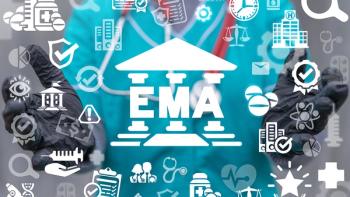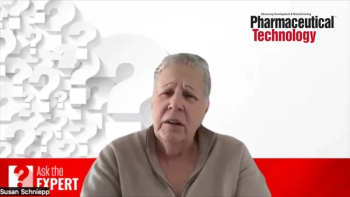
- Pharmaceutical Technology-04-02-2008
- Volume 32
- Issue 4
Trends: Holograms and Anticounterfeiting
Sophisticated replication techniques have made counterfeiting and fraud a serious threat to the pharmaceutical industry.
The World Health Organization estimates that annual earnings from the global sales of counterfeit and substandard medicines are more than $32 billion. Both drugs and packaging are counterfeited and people's lives have been put at risk. Diversion of legitimate products outside authorized distribution channels is another issue. To combat these problems, many of the world's leading pharmaceutical companies have directed efforts toward authenticating their packaging as part of the process of protecting their products. Diffractive optically variable devices—referred to generically as holograms—have become a widely used overt authentication feature on pharmaceutical products worldwide.
The above combination of a metallized, reflective holographic stripe and a clear holographic laminate on a vitamin package received an Excellence in Holography Award from the International Hologram Manufacturers Association in 2007. (PHOTO: PURA GROUP-TSS HOLOGRAPHICS/IHMA)
Since Glaxo (North Carolina) first used a tamper-evident hologram to seal packs of Zantac in 1989, holograms have been taken up in a big way by industry. Many major drug companies use holograms on at least some of their medicines in the form of labels, seals, hot-stamped patches, and blister-foils. The ability of the hologram to provide effective protection lies in the continuous innovation, invention, and evolution in holographic techniques that have succeeded in creating increasingly complex devices that are easily recognized yet difficult to copy accurately.
The evolving role of the hologram has also been accompanied by increased use of the security device in combination with other authentication technologies. In such solutions, holograms can provide overt first-line authentication while covert features such as scrambled images, microtext, UV-sensitive or other specialist inks provide second line authentication for trained examiners and appropriate decoding equipment.
Another recent trend is the serialization of holograms as part of systems that combine authentication with traceability. These "track-and-trace" systems link on-pack security devices with database management and field-tracking services. Manufacturers are able to tell where a pharmaceuticals consignment has been, where it's located, and where it's headed. This is particularly important in identifying the source and provenance of products.
While US Congress is currently considering making the use of security-marking on some pharmaceutical products mandatory using "overt optically variable counterfeit-resistant technologies" to protect consumers from fakes, the hologram is already specified as the authentication feature on the world's only statutory pharmaceutical marking scheme: the Meditag program in Malaysia. This program requires all registered medicines, over-the-counter pharmaceuticals, and traditional medicines to carry a uniquely numbered label built around a hologram. More recently, Nigeria's National Agency for Food & Drug Administration and Control has announced plans to introduce uniquely numbered holographic labels on all licensed medicines distributed in the country.
Perhaps unsurprisingly, the success and near ubiquitous use of holograms in anticounterfeiting applications has inevitably led to attempts to copy or replicate them. The intrinsic features of holograms, however, are very difficult to copy with 100% accuracy which makes them a preferred detection feature for packaging.
It is important to note, however, that it is the primary responsibility of manufacturers and regulators to ensure that fake pharmaceuticals not be able to enter the legitimate supply chain. A case in point occurred in Southeast Asia where it has been reported that more than half the sales of the antimalaria treatment Artesunate were for counterfeit versions despite the drug's blister-pack that contained a hologram. The point is, although regulators can identify fake holograms, the public cannot necessarily do so. Going forward, holograms will continue to evolve and for the time being, remain an integral part of anticounterfeiting strategies.
Ian Lancaster is general secretary at the International Hologram Manufacturers Association.
Articles in this issue
over 17 years ago
Suppositories: The Incomplete Storyover 17 years ago
A Transformation in the Makingover 17 years ago
Vapors, Venison, and Videosover 17 years ago
Inside IPEC-EUROPE: Pharmaceutical Excipients—The View from the EUover 17 years ago
Measuring Excipient-Market Growthover 17 years ago
Report From: China, May 2008over 17 years ago
Weak Link in the Pharmaceutical Supply Chainover 17 years ago
Spectrophotometric Determination of Leadover 17 years ago
Message in a Bottleover 17 years ago
Tracking the Potential of ExcipientsNewsletter
Get the essential updates shaping the future of pharma manufacturing and compliance—subscribe today to Pharmaceutical Technology and never miss a breakthrough.




